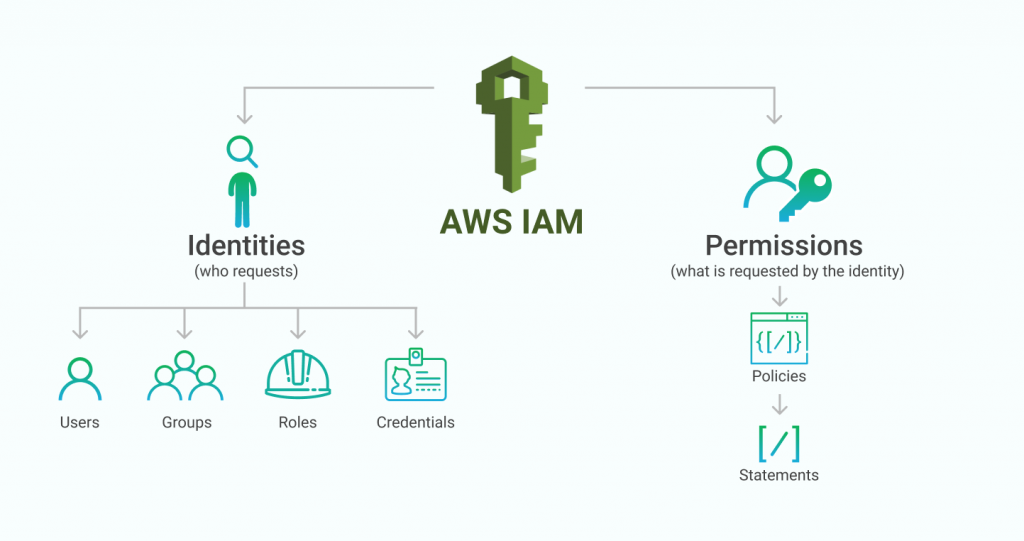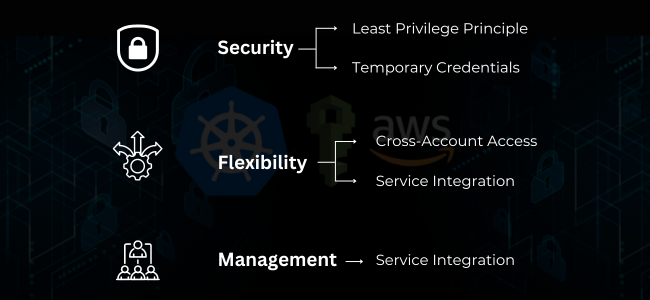What is IAM Roles in AWS?
Published Sep 13, 2024
What is an IAM Role?

An IAM (Identity and Access Management) role is an AWS identity with specific permissions that you can create in your account. IAM roles are similar to IAM users in that they are AWS identities with permissions policies that determine what the identity can and cannot do in AWS. However, instead of being associated with a specific user or a single entity, an IAM role is intended to be assumable by anyone or any service that needs it.
Key Characteristics of IAM Roles
-
Temporary Security Credentials: IAM roles provide temporary security credentials to users or services that assume the role.
-
Fine-Grained Permissions: Permissions for IAM roles are defined by policies that determine the allowed actions and resources.
-
Cross-Account Access: IAM roles can be used to grant access to resources across different AWS accounts.
-
Service Roles: IAM roles can be assigned to AWS services to allow them to interact with other AWS resources securely.
Importance of IAM Roles

1. Security
-
Least Privilege Principle: IAM roles enable the principle of least privilege by granting only the necessary permissions for a specific task.
-
Temporary Credentials: By providing temporary credentials, IAM roles reduce the risk of long-term credentials being compromised.
2. Flexibility
-
Cross-Account Access: IAM roles facilitate secure cross-account access, allowing resources in one AWS account to interact with resources in another account.
-
Service Integration: IAM roles are essential for integrating AWS services securely. For example, an EC2 instance can assume an IAM role to access S3 buckets or DynamoDB tables without embedding AWS credentials in the code.
3. Management
-
Simplified Permissions Management: Using IAM roles, you can manage permissions more easily and centrally, rather than embedding credentials in application code.
How to Create and Use IAM Roles in AWS
Step 1: Creating an IAM Role
1.1 Log in to the AWS Management Console
Navigate to the IAM Dashboard.
1.2 Click "Roles" in the left-hand menu
Then, click "Create role".
1.3 Choose the type of role
Select the type of trusted entity that will use the role:
-
AWS service: To allow an AWS service (e.g., EC2, Lambda) to assume this role.
-
Another AWS account: To allow a different AWS account to assume this role.
-
Web identity: For applications that use federated users who sign in via an identity provider (IdP) like Google or Facebook.
-
SAML 2.0 federation: For applications that use users from your organization's identity provider.
1.4 Select the AWS service (if applicable)
For example, if you are creating a role for an EC2 instance, select "EC2" from the list of services.
1.5 Attach permissions policies
Select the permissions policies that define what the role can do. You can use AWS managed policies or create a custom policy.
1.6 Name and review the role
Provide a name for your role, review the settings, and click "Create role".
Example: Creating an IAM Role for EC2 to Access S3
import boto3
# Create IAM client
iam = boto3.client('iam')
# Create the role
role = iam.create_role(
RoleName='EC2AccessS3Role',
AssumeRolePolicyDocument=json.dumps({
'Version': '2012-10-17',
'Statement': [
{
'Effect': 'Allow',
'Principal': {'Service': 'ec2.amazonaws.com'},
'Action': 'sts:AssumeRole'
}
]
})
)
# Attach policy to the role
iam.attach_role_policy(
RoleName='EC2AccessS3Role',
PolicyArn='arn:aws:iam::aws:policy/AmazonS3ReadOnlyAccess'
)
print(role)
Step 2: Assigning the Role to an EC2 Instance
2.1 Launch or select an EC2 instance
You can assign a role to an EC2 instance either during the launch process or to an existing instance.
2.2 Assign the IAM role
During the launch process, under the "Configure Instance" section, select the IAM role you created (e.g., "EC2AccessS3Role").
For an existing instance:
-
Go to the EC2 Dashboard.
-
Select the instance.
-
Click "Actions" -> "Instance Settings" -> "Attach/Replace IAM Role".
-
Select the IAM role (e.g., "EC2AccessS3Role") and click "Apply".
Step 3: Using the Role in Your Application
When an EC2 instance assumes an IAM role, it can use the temporary security credentials provided by the role to interact with AWS services.
Example: Accessing S3 from an EC2 Instance
import boto3
# Create an S3 client
s3 = boto3.client('s3')
# List all S3 buckets
response = s3.list_buckets()
for bucket in response['Buckets']:
print(bucket['Name'])
Monitoring and Auditing IAM Roles
-
CloudTrail: Use AWS CloudTrail to log API calls made with IAM roles. This helps in auditing and monitoring the use of roles.
-
IAM Access Analyzer: Use IAM Access Analyzer to identify and analyze access provided by your IAM policies.
Best Practices for Using IAM Roles
-
Least Privilege Principle: Grant only the permissions necessary for tasks by using fine-grained policies.
-
Regular Audits: Regularly audit IAM roles and policies to ensure they adhere to security best practices.
-
Avoid Long-Term Credentials: Use IAM roles with temporary credentials instead of embedding long-term AWS credentials in your applications.
-
Role Rotation: Regularly rotate roles and policies to enhance security.
IAM roles in AWS are essential for securely managing access to AWS resources. By providing temporary security credentials and allowing for fine-grained permissions, IAM roles enhance both security and flexibility. Implementing IAM roles effectively involves creating roles with appropriate permissions, assigning them to AWS resources, and using them within your applications. Regular monitoring and adherence to best practices ensure that your use of IAM roles maintains the highest security standards.
 2009 - 2024 Appsbee. All Rights Reserved.
2009 - 2024 Appsbee. All Rights Reserved.